Abstract
1. The synthesis, distribution, storage, and subsequent metabolism of 5-hydroxytryptamine (5-HT) produced in mice from the administration of its radioactive precursor, 5-hydroxytryptophan, has been investigated to form the basis for a similar study to be conducted by radioautography.
2. Intravenous injection of the radioactive material was found to be essential for significant uptake of radioactivity by tissue. The duration of the period during which radioactive material was available for uptake by the tissue was 2 hr.
3. The relative distribution of radioactivity in individual organs was studied and the radioactive compounds present in each were identified and quantitatively assayed. No unrelated routes of metabolism of the labelled material were found and radioautographic results may be interpreted in terms of the metabolic picture which emerged.
4. Radioactive 5-HT was bound in tissues in preference to both its precursor, and metabolite, 5-hydroxytryptamine-O-glucuronide, and the radioactive 5-HT produced in vivo after the injection of labelled 5-hydroxytryptophan probably entered and labelled the endogenous 5-HT pool.
5. Fixatives prepared with buffer solutions made hypertonic by the addition of sucrose could rapidly and effectively halt the movement of radioactive 5-HT out of tissues and prevent its subsequent extraction during histological processing.
6. It is concluded that localization of sites concerned with 5-HT metabolism by means of radioautography is feasible and the 5-HT so localized will probably reflect the physiological compartmentalization of the amine.
Full text
PDF

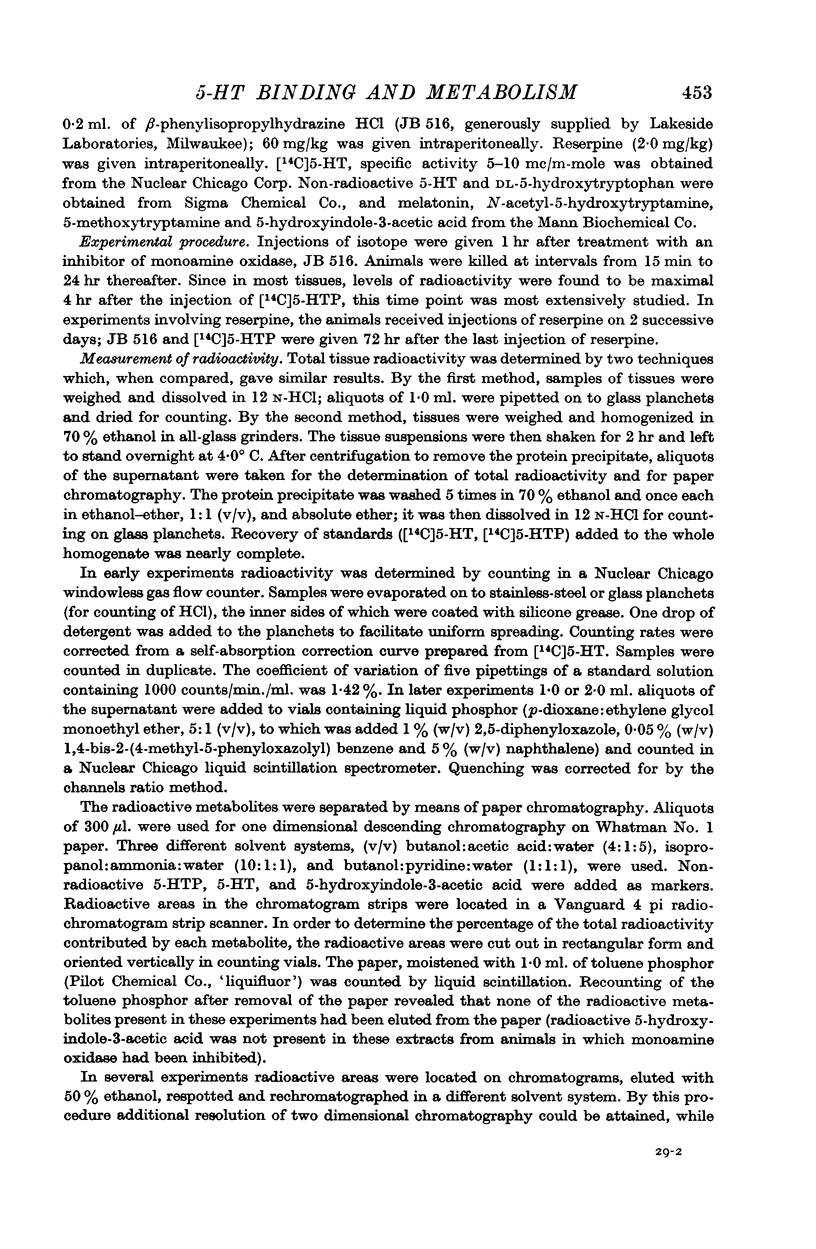
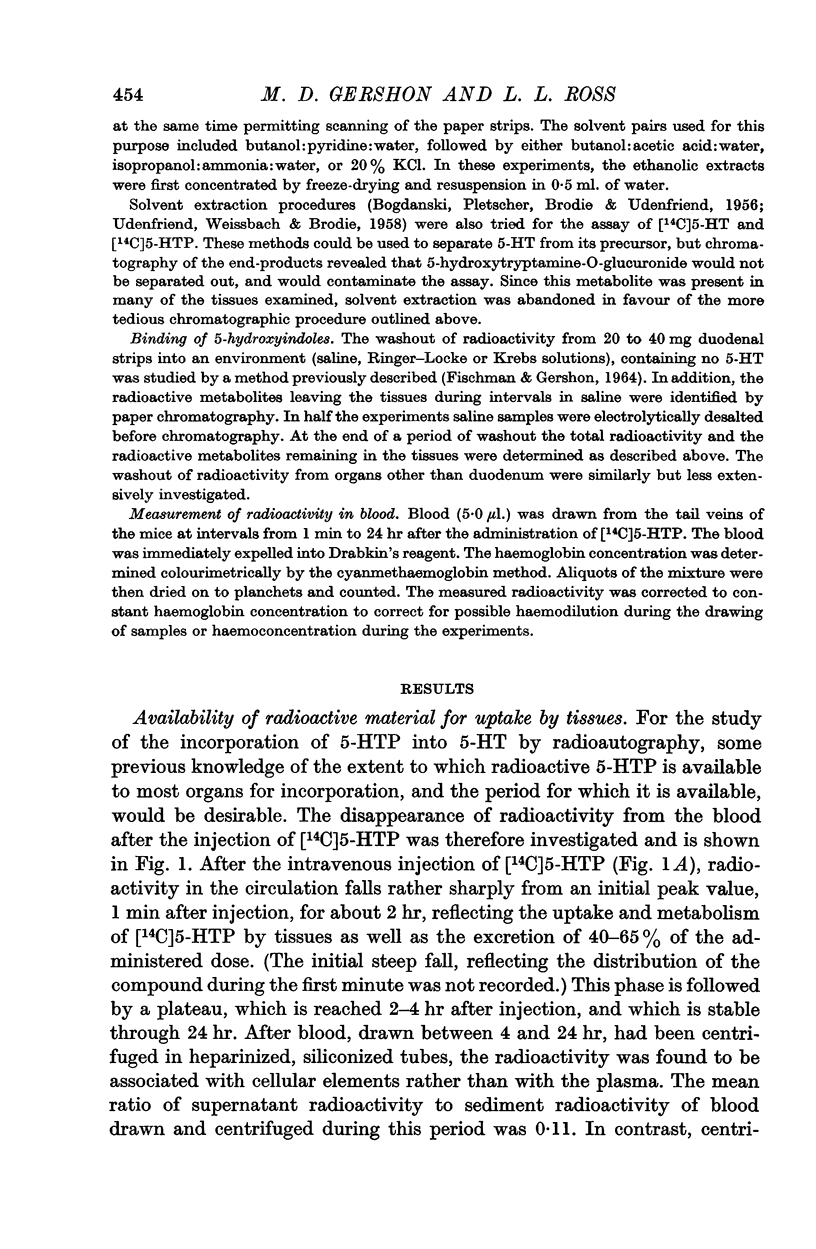

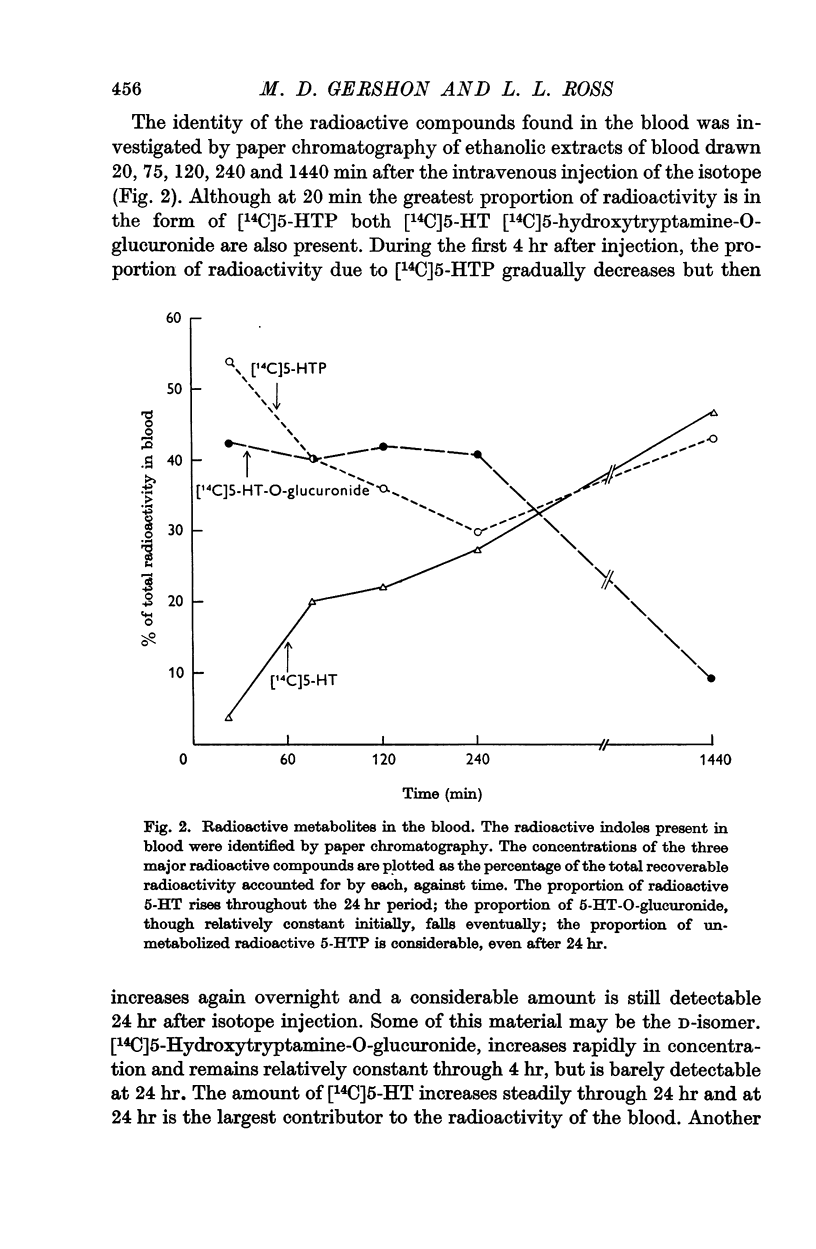
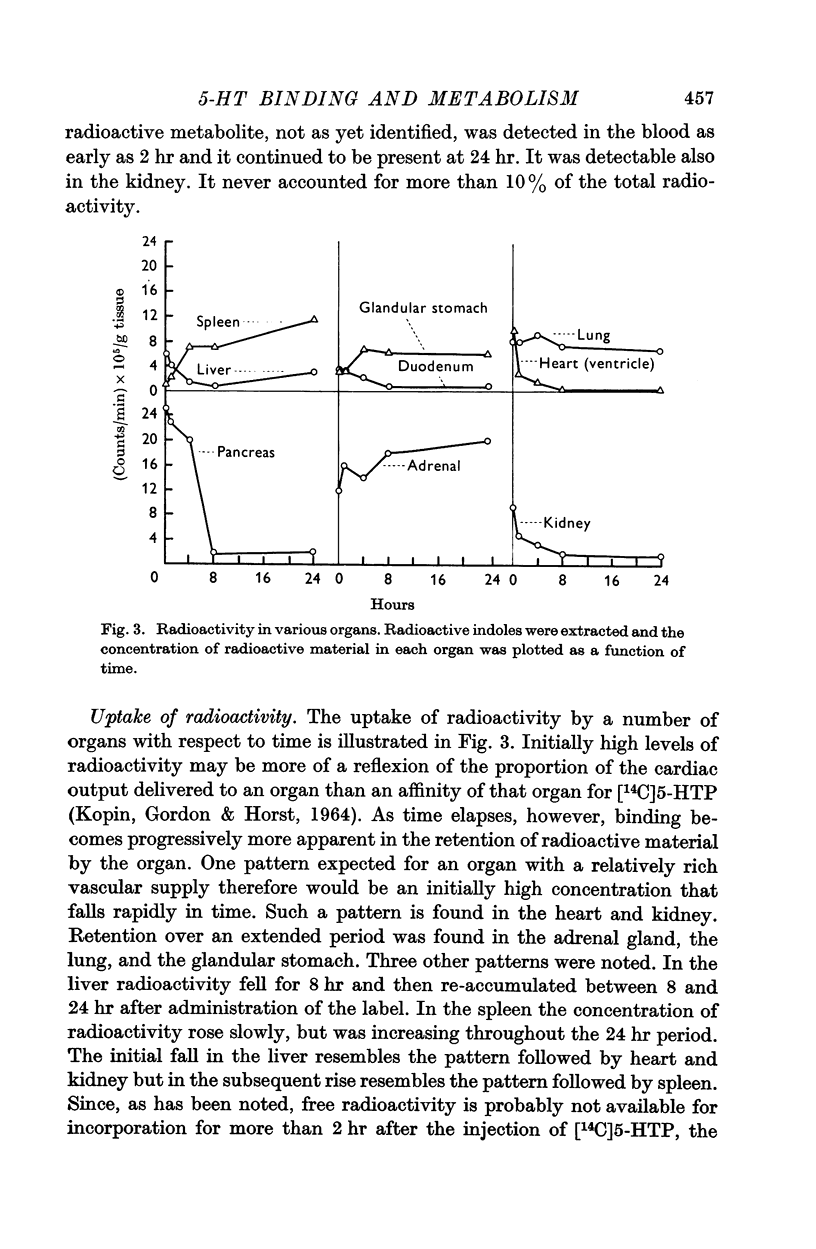





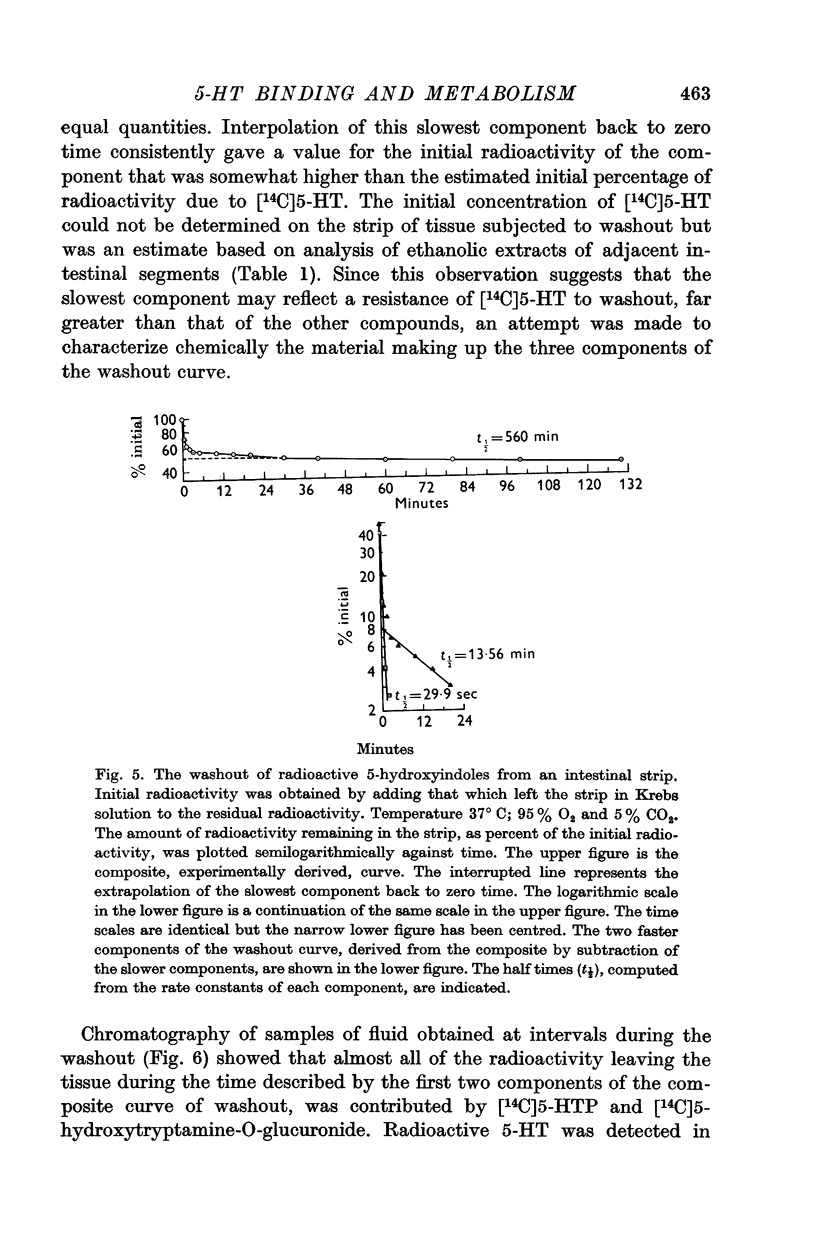




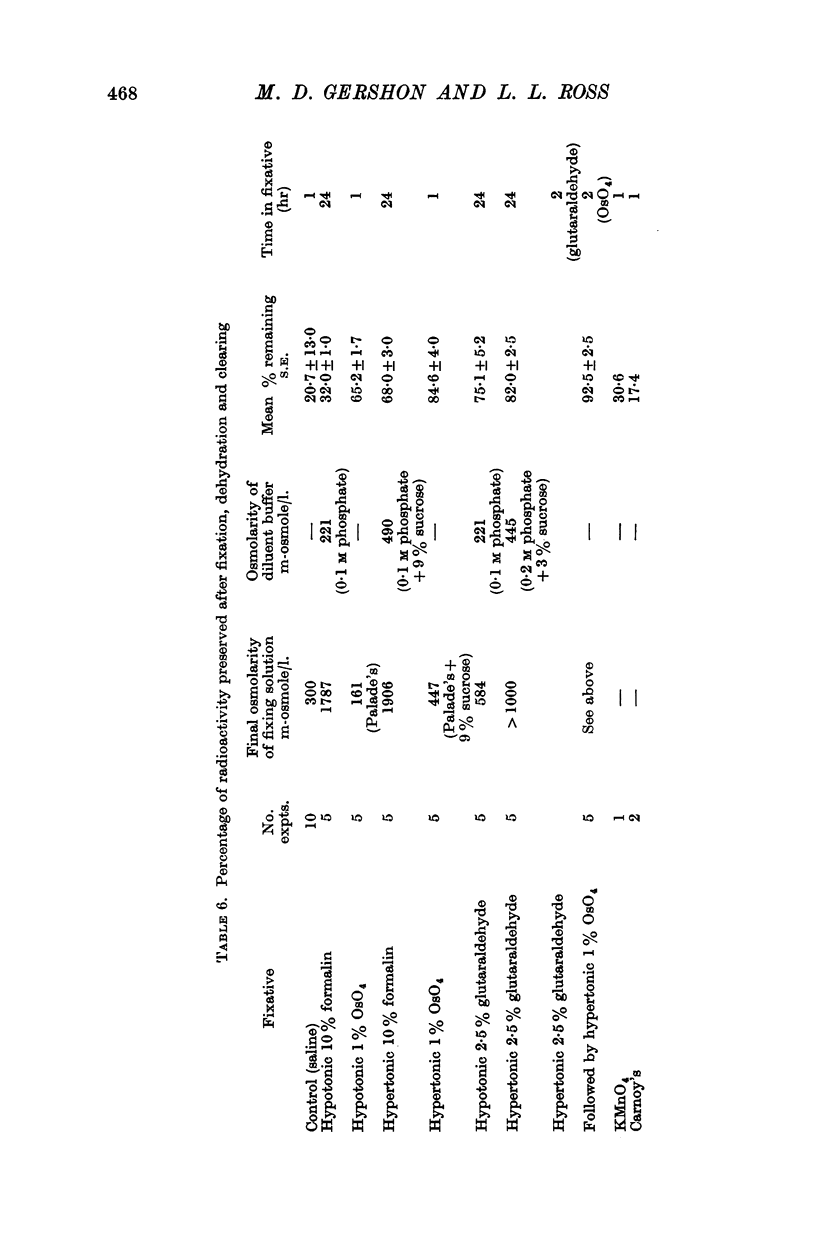



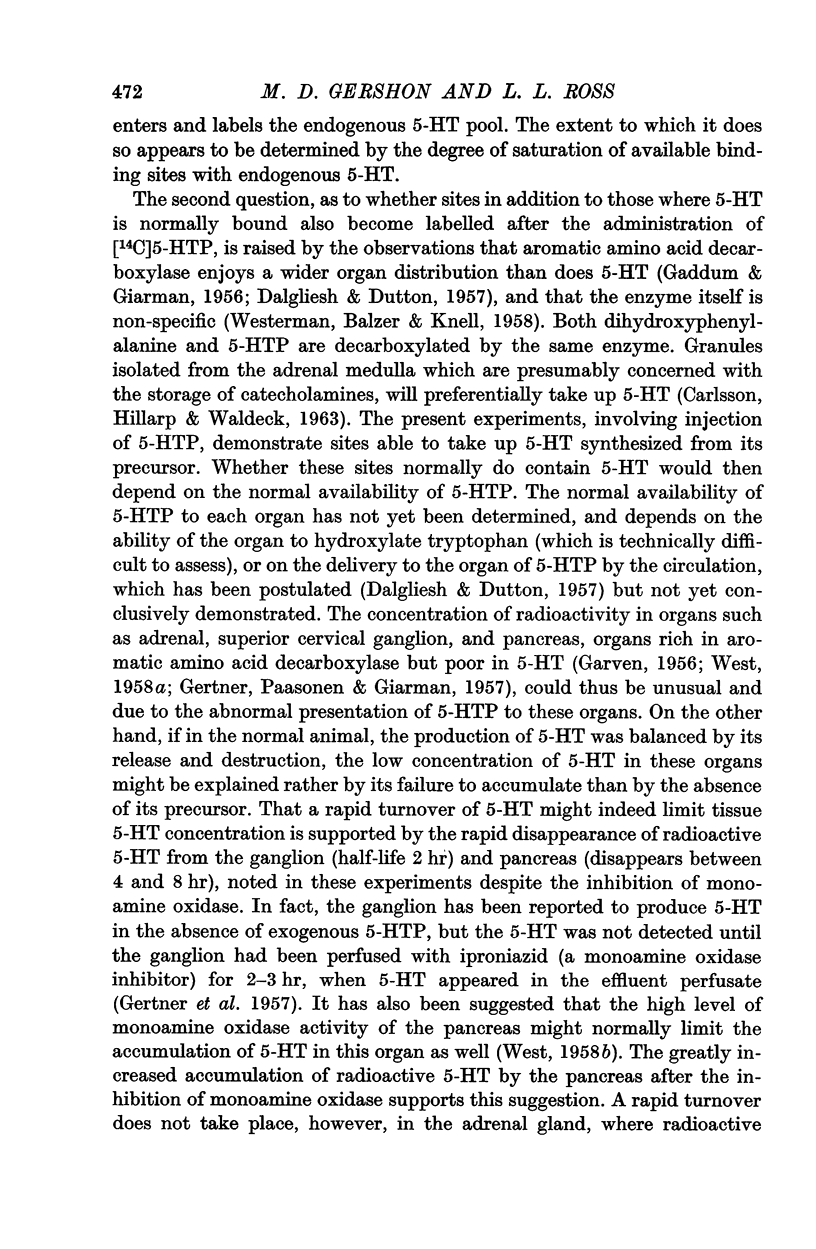
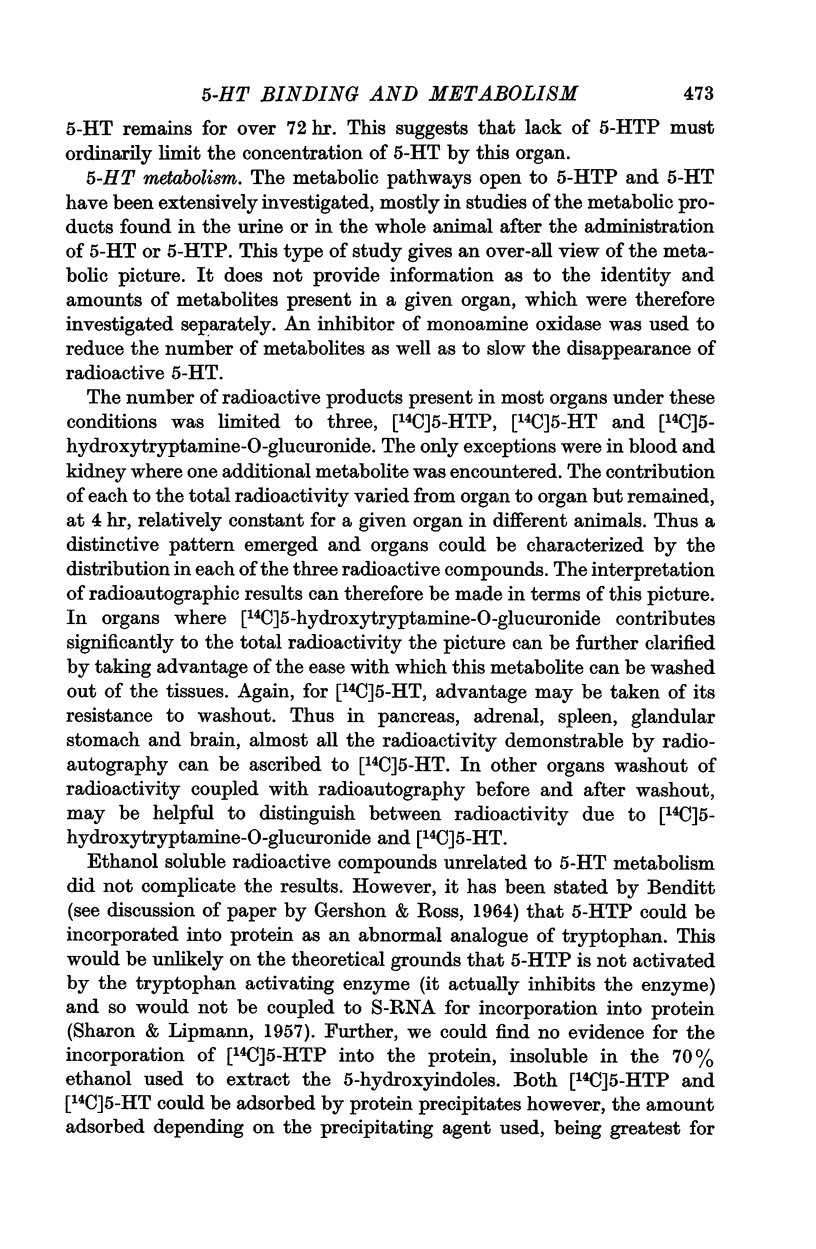


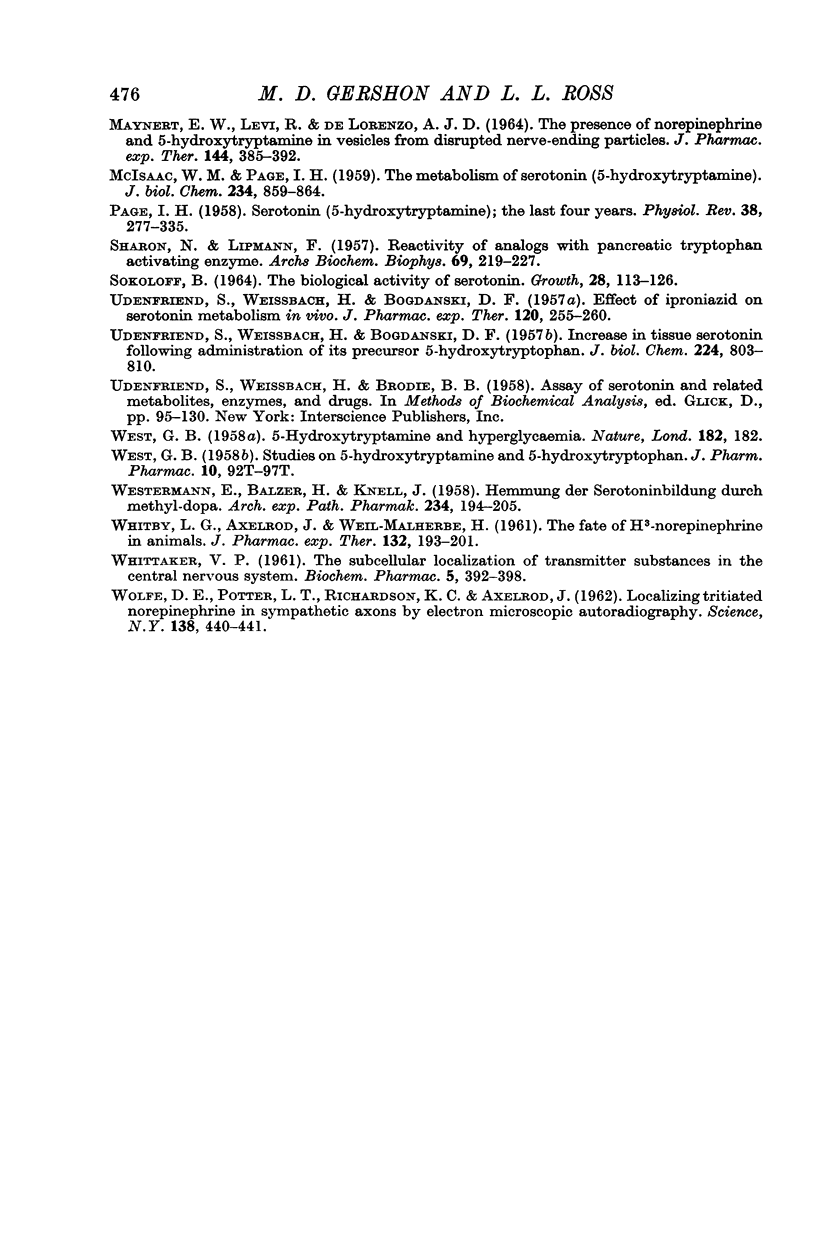
Selected References
These references are in PubMed. This may not be the complete list of references from this article.
- AXELROD J., INSCOE J. K. THE UPTAKE AND BINDING OF CIRCULATING SEROTONIN AND THE EFFECT OF DRUGS. J Pharmacol Exp Ther. 1963 Aug;141:161–165. [PubMed] [Google Scholar]
- BAKER R. V. Observations on the localization of 5-hydroxytryptamine. J Physiol. 1958 Aug 6;142(3):563–570. doi: 10.1113/jphysiol.1958.sp006036. [DOI] [PMC free article] [PubMed] [Google Scholar]
- BOGDANSKI D. F., PLETSCHER A., BRODIE B. B., UNDENFRIEND S. Identification and assay of serotonin in brain. J Pharmacol Exp Ther. 1956 May;117(1):82–88. [PubMed] [Google Scholar]
- BOGDANSKI D. F., WEISSBACH H., UDENFRIEND Pharmacological studies with the serotonin precursor, 5-hydroxytryptophan. J Pharmacol Exp Ther. 1958 Feb;122(2):182–194. [PubMed] [Google Scholar]
- BULBRING E., LIN R. C. The effect of intraluminal application of 5-hydroxytryptamine and 5-hydroxytryptophan on peristalsis; the local production of 5-HT and its release in relation to intraluminal pressure and propulsive activity. J Physiol. 1958 Mar 11;140(3):381–407. [PMC free article] [PubMed] [Google Scholar]
- CARTIER P. LE M'ETABOLISME DE LA S'EROTONINE. Pathol Biol. 1964 Nov;12:1092–1097. [PubMed] [Google Scholar]
- DALGLIESH C. E., DUTTON R. W. Biogenesis of 5-hydroxytryptophan. Br J Cancer. 1957 Jun;11(2):296–309. doi: 10.1038/bjc.1957.38. [DOI] [PMC free article] [PubMed] [Google Scholar]
- DIAMANT B. Further observations on the effect of anoxia on histamine release from guinea-pig and rat lung tissue in vitro. Acta Physiol Scand. 1962 Sep;56:1–16. doi: 10.1111/j.1748-1716.1962.tb02477.x. [DOI] [PubMed] [Google Scholar]
- FISCHMAN D. A., GERSHON M. D. A METHOD FOR STUDYING INTRACELLULAR MOVEMENT OF WATER-SOLUBLE ISOTOPES PRIOR TO RADIOAUTOGRAPHY. J Cell Biol. 1964 Apr;21:139–143. doi: 10.1083/jcb.21.1.139. [DOI] [PMC free article] [PubMed] [Google Scholar]
- GADDUM J. H., GIARMAN N. J. Preliminary studies on the biosynthesis of 5-hydroxytryptamine. Br J Pharmacol Chemother. 1956 Mar;11(1):88–92. doi: 10.1111/j.1476-5381.1956.tb01033.x. [DOI] [PMC free article] [PubMed] [Google Scholar]
- GARVEN J. D. The estimation of 5-hydroxytryptamine in the presence of adrenaline. Br J Pharmacol Chemother. 1956 Mar;11(1):66–70. doi: 10.1111/j.1476-5381.1956.tb01029.x. [DOI] [PMC free article] [PubMed] [Google Scholar]
- GERSHON M. D., ROSS L. L. Studies on the relationship of 5-hydroxytryptamine and the enterochromaffin cell to anaphylactic shock in mice. J Exp Med. 1962 Feb 1;115:367–382. doi: 10.1084/jem.115.2.367. [DOI] [PMC free article] [PubMed] [Google Scholar]
- GREEN J. P., FURANO A. V. Two pools for amines in neoplastic mast cells. Biochem Pharmacol. 1962 Nov;11:1049–1053. doi: 10.1016/0006-2952(62)90164-8. [DOI] [PubMed] [Google Scholar]
- KVEDER S., ISKRIC S., KEGLEVIC D. 5-Hydroxytryptophol: a metabolite of 5-hydroxytryptamine in rats. Biochem J. 1962 Dec;85:447–449. doi: 10.1042/bj0850447. [DOI] [PMC free article] [PubMed] [Google Scholar]
- LOWRY O. H., ROSEBROUGH N. J., FARR A. L., RANDALL R. J. Protein measurement with the Folin phenol reagent. J Biol Chem. 1951 Nov;193(1):265–275. [PubMed] [Google Scholar]
- McISAAC W. M., PAGE I. H. The metabolism of serotonin (5-hydroxytryptamine). J Biol Chem. 1959 Apr;234(4):858–864. [PubMed] [Google Scholar]
- PAGE I. H. Serotonin (5-hydroxytryptamine); the last four years. Physiol Rev. 1958 Apr;38(2):277–335. doi: 10.1152/physrev.1958.38.2.277. [DOI] [PubMed] [Google Scholar]
- SHARON N., LIPMANN F. Reactivity of analogs with pancreatic tryptophan-activating enzyme. Arch Biochem Biophys. 1957 Jul;69:219–227. doi: 10.1016/0003-9861(57)90488-5. [DOI] [PubMed] [Google Scholar]
- SOKOLOFF B. THE BIOLOGICAL ACTIVITY OF SEROTONIN. Growth. 1964 Jun;28:113–126. [PubMed] [Google Scholar]
- UDENFRIEND S., WEISSBACH H., BOGDANSKI D. F. Effect of iproniazid on serotonin metabolism in vivo. J Pharmacol Exp Ther. 1957 Jun;120(2):255–260. [PubMed] [Google Scholar]
- UDENFRIEND S., WEISSBACH H., BOGDANSKI D. F. Increase in tissue serotonin following administration of its precursor 5-hydroxytryptophan. J Biol Chem. 1957 Feb;224(2):803–810. [PubMed] [Google Scholar]
- UDENFRIEND S., WEISSBACH H., BRODIE B. B. Assay of serotonin and related metabolites, enzymes, and drugs. Methods Biochem Anal. 1958;6:95–130. doi: 10.1002/9780470110225.ch5. [DOI] [PubMed] [Google Scholar]
- WESTERMANN E., BALZER H., KNELL J. Hemmung der Serotoninbildung durch alpha-Methyl-Dopa. Naunyn Schmiedebergs Arch Exp Pathol Pharmakol. 1958;234(3):194–205. [PubMed] [Google Scholar]
- WEST G. B. 5-Hydroxytryptamine and hyperglycaemia. Nature. 1958 Jul 19;182(4629):182–182. doi: 10.1038/182182a0. [DOI] [PubMed] [Google Scholar]
- WHITBY L. G., AXELROD J., WEIL-MALHERBE H. The fate of H3-norepinephrine in animals. J Pharmacol Exp Ther. 1961 May;132:193–201. [PubMed] [Google Scholar]
- WHITTAKER V. P. The subcellular localization of transmitter substances in the central nervous system. Biochem Pharmacol. 1961 Feb;5:392–398. doi: 10.1016/0006-2952(61)90033-8. [DOI] [PubMed] [Google Scholar]
- WOLFE D. E., POTTER L. T., RICHARDSON K. C., AXELROD J. Localizing tritiated norepinephrine in sympathetic axons by electron microscopic autoradiography. Science. 1962 Oct 19;138(3538):440–442. doi: 10.1126/science.138.3538.440. [DOI] [PubMed] [Google Scholar]


